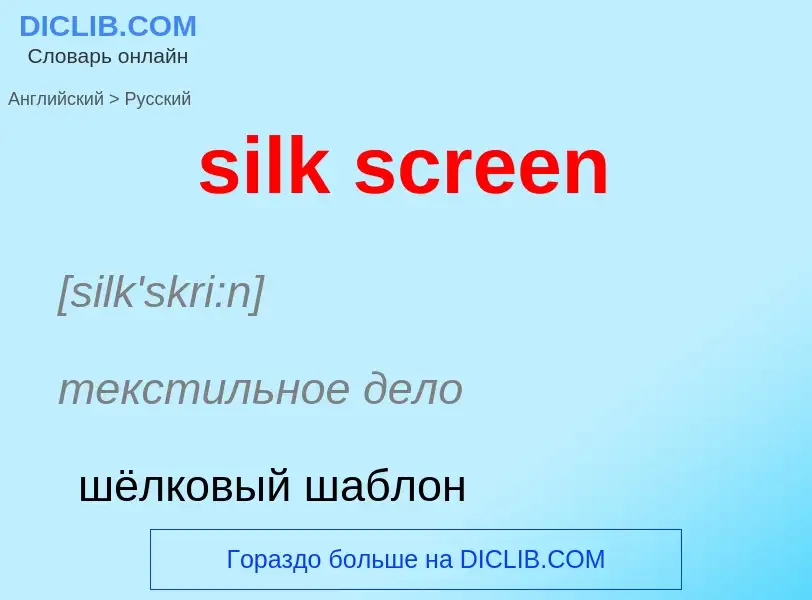Перевод и анализ слов искусственным интеллектом ChatGPT
На этой странице Вы можете получить подробный анализ слова или словосочетания, произведенный с помощью лучшей на сегодняшний день технологии искусственного интеллекта:
- как употребляется слово
- частота употребления
- используется оно чаще в устной или письменной речи
- варианты перевода слова
- примеры употребления (несколько фраз с переводом)
- этимология
silk screen - перевод на русский
[silk'skri:n]
текстильное дело
шёлковый шаблон
шёлковый трафарет
общая лексика
шелкотрафаретный
Определение
Википедия

Screen printing is a printing technique where a mesh is used to transfer ink (or dye) onto a substrate, except in areas made impermeable to the ink by a blocking stencil. A blade or squeegee is moved across the screen to fill the open mesh apertures with ink, and a reverse stroke then causes the screen to touch the substrate momentarily along a line of contact. This causes the ink to wet the substrate and be pulled out of the mesh apertures as the screen springs back after the blade has passed. One colour is printed at a time, so several screens can be used to produce a multi-coloured image or design.
Traditionally, silk was used in the process. Currently, synthetic threads are commonly used in the screen printing process. The most popular mesh in general use is made of polyester. There are special-use mesh materials of nylon and stainless steel available to the screen-printer. There are also different types of mesh size which will determine the outcome and look of the finished design on the material.
The technique is used not only for garment printing but for printing on many other substances, including decals, clock and watch faces, balloons, and many other products. Advanced uses include laying down conductors and resistors in multi-layer circuits using thin ceramic layers as the substrate.



![The poster shop at [[Heart Mountain War Relocation Center]] was operated by Japanese-American internees who used the silkscreen method to print information for the entire center (January 1943) The poster shop at [[Heart Mountain War Relocation Center]] was operated by Japanese-American internees who used the silkscreen method to print information for the entire center (January 1943)](https://commons.wikimedia.org/wiki/Special:FilePath/Heart Mountain Relocation Center, Heart Mountain, Wyoming. Members of the Poster Shop Staff at the . . . - NARA - 539255.jpg?width=200)


![macro photo]] of a screen print with a photographically produced [[stencil]]. The ink will be printed where the stencil does not cover the substrate macro photo]] of a screen print with a photographically produced [[stencil]]. The ink will be printed where the stencil does not cover the substrate](https://commons.wikimedia.org/wiki/Special:FilePath/Ssc.jpg?width=200)
